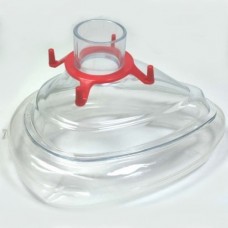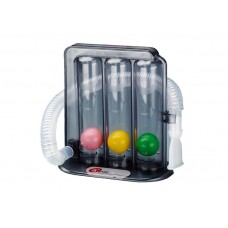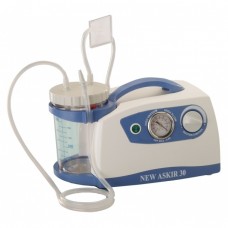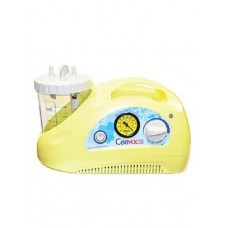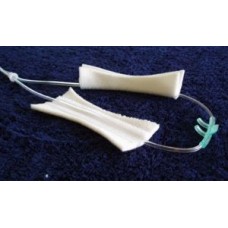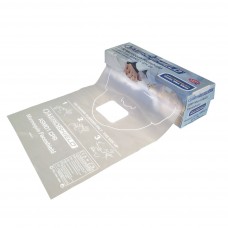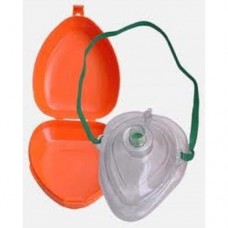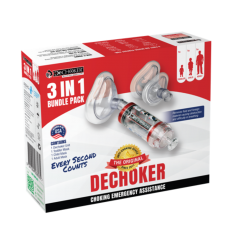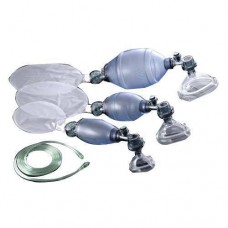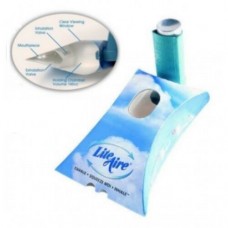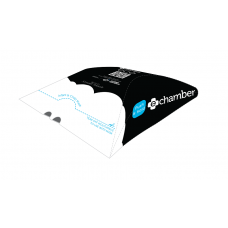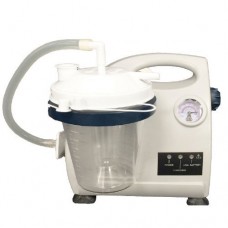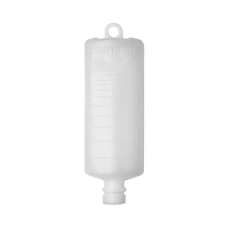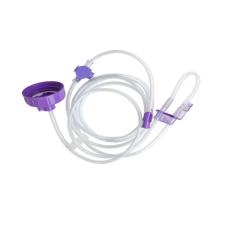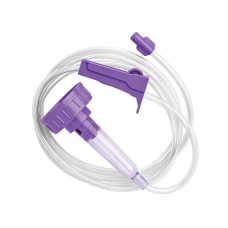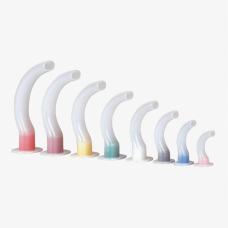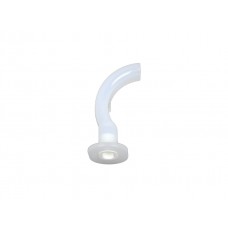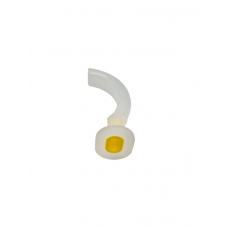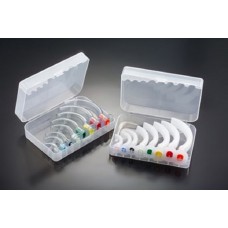Anaesthetics, Airway
AIRWAY ASSESSMENT
A difficult airway may present as difficult ventilation, difficult laryngoscopy, difficult intubation or a combination of these. 30 - 40% of anaesthetic related deaths are due to the inability to manage the airway, resulting in hypoxia. The definition of difficult intubation is greater than 3 attempts at intubation, or greater than 10 minutes of attempted intubation. The incidence of difficult intubation is about 0.5 - 16.6% (the rate varies depending on the definition). 15% of difficult intubations were also associated with difficult mask ventilation.
Successful airway management ensure adequate tissue oxygenation. Most airway related deaths and morbidity result from a failure to ventilate and oxygenate rather than a failure to intubate. It is important for the anaesthetist to be skilled at airway management without tracheal intubation.
Facemask ventilation
Anaesthetic facemasks are designed to fit the contours of the face with minimal pressure. They are cushioned to minimize the leakage of gases and come in different sizes. The correct size for the patient will minimize dead space and provide a good seal. Paediatric masks can be cushioned circular masks or the Rendell-Baker mask, which is designed to minimize dead space.
Once the patient loses consciousness in the supine position, the tongue and epiglottis fall towards the posterior pharyngeal wall tending to obstruct the upper airway. The anaesthetist can perform chin lift and jaw thrust manoeuvres to open the airway. The facemask is held onto the face using the thumb at the bridge of the nose, fifth finger behind the angle of the mandible and the rest of the fingers pull the mandible into the mask. The mask should not be pushed onto the face. Edentulous patients and beards will make it difficult to achieve an adequate seal with a facemask for positive pressure ventilation.
Pharyngeal airways
Pharyngeal airways relieve upper airway obstruction caused by soft tissue relaxation during unconsciousness. They are able to separate the soft tissues from the posterior pharyngeal wall. Insertion will require attenuation of the upper airway reflexes to prevent regurgitation, gagging and laryngospasm. Measuring the distance from the tragus of the ear to the corner of the mouth allow the anaesthetist to choose the correct size of an oral airway.
Laryngeal mask airway
The LMA consists of an elliptical bowl-shaped mask that sits over the laryngeal inlet surrounded by a cuffed rim. There is a tubular portion that sits in the oropharynx and mouth. It can be connected to the breathing circuit. It is available in adult and paediatric sizes and there is now a version with a gastric lumen that sits in the upper oesophagus to reduce the risk of regurgitation into the larynx (ProSeal). A reinforced version is also available.
Airway Tracheostomy Neck Tape Adult Vbm Velcro Tube Holder
SOLUTIONS MEDICAL PROVIDES QUALITY MEDICAL SUPPLIES DEVICES & EQUIPMENT AIRWAY TRACHEOSTOMY NECK TAPE ADULT VB..
$19.80 Ex Tax: $18.00
Face Shield Cpr Disposable Tough Vinyl With One Way Valve
SOLUTIONS MEDICAL PROVIDES QUALITY MEDICAL SUPPLIES DEVICES & EQUIPMENT ..
$6.05 Ex Tax: $5.50
Oxygen Tubing Connectors (X20) Blue,clear Or Red
SOLUTIONS MEDICAL PROVIDES QUALITY MEDICAL SUPPLIES DEVICES & EQUIPMENT OXY..
$15.50 Ex Tax: $15.50
Paramedic Laryngeal Endotracheal Tube Size 6.5 Cuffed Et Tube X1 Piece Sale Item Expired Stock
..
$11.00 $16.50 Ex Tax: $10.00
Paramedic Laryngeal Endotracheal Tube Size 7.5 Cuffed Et Tube X1 Piece Sale Item Expired Stock
..
$11.00 $16.50 Ex Tax: $10.00
Sterile Suction Catheter With Xro Line Fg18
SOLUTIONS MEDICAL PROVIDES QUALITY MEDICAL SUPPLIES DEVICES & EQUIPMENT STERILE SUCTI..
$5.50 Ex Tax: $5.00
Suction Tube F12 White
SOLUTIONS MEDICAL PROVIDES QUALITY MEDICAL SUPPLIES DEVICES & EQUIPMENT ..
$6.60 Ex Tax: $6.00
Suction Tubing Soft 2m X 1 With Connectors
SUCTION TUBING SOFT WITH CONNECTORS (X1) When only the best will do! Another Quality Product you can trust from Solutions Medical Quality - Precision -&nbs..
$6.05 Ex Tax: $5.50
Tracheolife Ii With Filter Hme Oxygen Port Sterile Moisturizes Gases
SOLUTIONS MEDICAL PROVIDES QUALITY MEDICAL SUPPLIES DEVICES & EQUIPMENT TRACH..
$8.00 Ex Tax: $8.00
Tracheostomy Tube Holder Portex White
SOLUTIONS MEDICAL PROVIDES QUALITY MEDICAL SUPPLIES DEVICES & EQUIPMENT TRACHEOSTOMY TU..
$20.00 Ex Tax: $20.00
Aerolearn Asthma Placebo Inhaler Training Device
SOLUTIONS MEDICAL PROVIDES QUALITY MEDICAL SUPPLIES DEVICES & EQUIPMENT ..
$18.70 Ex Tax: $17.00
AirPhysio Bacterial & Viral Filters for Mucus Clear & Lung Expansion Device
SOLUTIONS MEDICAL PROVIDES QUALITY MEDICAL SUPPLIES DEVICES & EQUIPMENT ..
$11.00 Ex Tax: $10.00
AirPhysio Device Carry Case
SOLUTIONS MEDICAL PROVIDES QUALITY MEDICAL SUPPLIES DEVICES & EQUIPMENT ..
$38.50 Ex Tax: $35.00
AirPhysio Mucus Removal Lung Expansion Device Natural Breathing Aid Air Physio
SOLUTIONS MEDICAL PROVIDES QUALITY MEDICAL SUPPLIES DEVICES & EQUIPMENT AirPh..
$88.00 Ex Tax: $80.00
AirPhysio Mucus Removal Lung Expansion Device Natural Breathing Aid Air Physio (FREE POSTAGE)
SOLUTIONS MEDICAL PROVIDES QUALITY MEDICAL SUPPLIES DEVICES & EQUIPMENT AirPh..
$104.50 Ex Tax: $95.00
AirPhysio Oscillating Positive Expiratory Pressure OPEP Device for Average Lung Capacity
SOLUTIONS MEDICAL PROVIDES QUALITY MEDICAL SUPPLIES DEVICES & EQUIPMENT AirPh..
$88.00 Ex Tax: $80.00
AirPhysio Oscillating Positive Expiratory Pressure OPEP Device for Children
SOLUTIONS MEDICAL PROVIDES QUALITY MEDICAL SUPPLIES DEVICES & EQUIPMENT AirPh..
$88.00 Ex Tax: $80.00
AirPhysio Oscillating Positive Expiratory Pressure OPEP Device for Low Lung Capacity
SOLUTIONS MEDICAL PROVIDES QUALITY MEDICAL SUPPLIES DEVICES & EQUIPMENT AirPh..
$88.00 Ex Tax: $80.00
AirPhysio Oscillating Positive Expiratory Pressure OPEP Device for Sports/Elite
SOLUTIONS MEDICAL PROVIDES QUALITY MEDICAL SUPPLIES DEVICES & EQUIPMENT Air P..
$88.00 Ex Tax: $80.00
AirPhysio Travel Case
SOLUTIONS MEDICAL PROVIDES QUALITY MEDICAL SUPPLIES DEVICES & EQUIPMENT ..
$38.50 Ex Tax: $35.00
Anaesthetic Mask Soft Cushion Size 0 Neonate
SOLUTIONS MEDICAL PROVIDES QUALITY MEDICAL SUPPLIES DEVICES & EQUIPMENT ..
$13.00 Ex Tax: $13.00
Anaesthetic Mask Soft Cushion Size 1 Large Infant
SOLUTIONS MEDICAL PROVIDES QUALITY MEDICAL SUPPLIES DEVICES & EQUIPMENT ..
$13.00 Ex Tax: $13.00
Anaesthetic Mask Soft Cushion Size 2 Small Child
SOLUTIONS MEDICAL PROVIDES QUALITY MEDICAL SUPPLIES DEVICES & EQUIPMENT ..
$13.00 Ex Tax: $13.00
Anaesthetic Mask Soft Cushion Size 3 Child
SOLUTIONS MEDICAL PROVIDES QUALITY MEDICAL SUPPLIES DEVICES & EQUIPMENT ..
$13.00 Ex Tax: $13.00
Anaesthetic Mask Soft Cushion Size 4 Small Adult
SOLUTIONS MEDICAL PROVIDES QUALITY MEDICAL SUPPLIES DEVICES & EQUIPMENT ..
$15.00 Ex Tax: $15.00
Anaesthetic Mask Soft Cushion Size 5 Large Adult
SOLUTIONS MEDICAL PROVIDES QUALITY MEDICAL SUPPLIES DEVICES & EQUIPMENT ..
$15.00 Ex Tax: $15.00
Aplus Tri Ball Incentive Spirometer
SOLUTIONS MEDICAL PROVIDES QUALITY MEDICAL SUPPLIES DEVICES & EQUIPMENT ..
$36.30 Ex Tax: $33.00
Aplus Tri Ball Incentive Spirometer (Free Postage)
SOLUTIONS MEDICAL PROVIDES QUALITY MEDICAL SUPPLIES DEVICES & EQUIPMENT ..
$49.50 Ex Tax: $45.00
Askir 30 Suction Pump 30l 240 Volt
SOLUTIONS MEDICAL PROVIDES QUALITY MEDICAL SUPPLIES DEVICES & EQUIPMENT ..
$764.50 Ex Tax: $695.00
Clements Lightweight Ceevac Suction Pump
SOLUTIONS MEDICAL PROVIDES QUALITY MEDICAL SUPPLIES DEVICES & EQUIPMENT ..
$2,194.50 Ex Tax: $1,995.00
Comfy Ears Large nasal cannula 2 Pads Only
SOLUTIONS MEDICAL PROVIDES QUALITY MEDICAL SUPPLIES DEVICES & EQUIPMENT Comfy..
$12.00 Ex Tax: $12.00
Cpr Manikin Face Shields For Cpr Training Skin Feel Latex Free 36/box Aero
SOLUTIONS MEDICAL PROVIDES QUALITY MEDICAL SUPPLIES DEVICES & EQUIPMENT ..
$33.00 Ex Tax: $30.00
Cpr Manikin Face Shields For Cpr Training Skin Feel Latex Free 36/box Aero (Free Postage)
SOLUTIONS MEDICAL PROVIDES QUALITY MEDICAL SUPPLIES DEVICES & EQUIPMENT ..
$49.50 Ex Tax: $45.00
Cpr Resus Masks Plus Accessories Tga Australia Listed Resuscitation
SOLUTIONS MEDICAL PROVIDES QUALITY MEDICAL SUPPLIES DEVICES & EQUIPMENT ..
$20.00 Ex Tax: $20.00
DECHOKER 3-in-1 Bundle – 1 Adult, 1 Child, 1 Toddler - Anti Choking Device
SOLUTIONS MEDICAL PROVIDES QUALITY MEDICAL SUPPLIES DEVICES & EQUIPMENT ..
$159.50 Ex Tax: $145.00
Disposable Resuscitator Adult Child & Infant Set
SOLUTIONS MEDICAL PROVIDES QUALITY MEDICAL SUPPLIES DEVICES & EQUIPMENT ..
$120.00 Ex Tax: $120.00
Disposable Resuscitator Adult X1 Assembled
SOLUTIONS MEDICAL PROVIDES QUALITY MEDICAL SUPPLIES DEVICES & EQUIPMENT Dispo..
$40.00 Ex Tax: $40.00
Disposable Spacer Lite Aire Cardboard Flat First Aid
SOLUTIONS MEDICAL PROVIDES QUALITY MEDICAL SUPPLIES DEVICES & EQUIPMENT ..
$8.00 Ex Tax: $8.00
Eco E-chamber Compact Cardboard Spacer
SOLUTIONS MEDICAL PROVIDES QUALITY MEDICAL SUPPLIES DEVICES & EQUIPMENT ..
$6.00 Ex Tax: $6.00
EMG Emergency Portable Suction Pump
SOLUTIONS MEDICAL PROVIDES QUALITY MEDICAL SUPPLIES DEVICES & EQUIPMENT ..
$1,094.50 Ex Tax: $995.00
Flexitainer Entral Feed M240.B15 1000ml 2288247
SOLUTIONS MEDICAL PROVIDES QUALITY MEDICAL SUPPLIES DEVICES & EQUIPMENT Flexitainer E..
$9.00 Ex Tax: $9.00
Foldable Cardboard Asthma Spacer, Disposable, 25 per Box
SOLUTIONS MEDICAL PROVIDES QUALITY MEDICAL SUPPLIES DEVICES & EQUIPMENT ..
$165.00 Ex Tax: $150.00
Freego Pump Giving Set Enfit S790.B18 2288260
SOLUTIONS MEDICAL PROVIDES QUALITY MEDICAL SUPPLIES DEVICES & EQUIPMENT Freego Pump G..
$21.00 Ex Tax: $21.00
Gravity Giving Set Enfit S705.B17 2288267
SOLUTIONS MEDICAL PROVIDES QUALITY MEDICAL SUPPLIES DEVICES & EQUIPMENT Gravity Givin..
$15.00 Ex Tax: $15.00
Guedel Airway (Oropharngeal) Respiratory Iso & Tga Listed
SOLUTIONS MEDICAL PROVIDES QUALITY MEDICAL SUPPLIES DEVICES & EQUIPMENT ..
$1.50 Ex Tax: $1.50
Guedel Airway (Oropharngeal) Respiratory Iso & Tga Listed White 70mm Sale Item Expiry 5/2024
SOLUTIONS MEDICAL PROVIDES QUALITY MEDICAL SUPPLIES DEVICES & EQUIPMENT ..
$0.75 $1.50 Ex Tax: $0.75
Guedel Airway (Oropharngeal) Respiratory Iso & Tga Listed Yellow 90mm Sale Item Expiry 3/2023
SOLUTIONS MEDICAL PROVIDES QUALITY MEDICAL SUPPLIES DEVICES & EQUIPMENT ..
$0.75 $1.50 Ex Tax: $0.75
Guedel Airways (Oropharyngeal) Respiratory Iso & Tga Listed X 1 Pack (Set Of 8)
SOLUTIONS MEDICAL PROVIDES QUALITY MEDICAL SUPPLIES DEVICES & EQUIPMENT GUEDEL AIRWAY..
$16.00 Ex Tax: $16.00
Guedel Airways (Set Of 8) (Oropharyngeal) Respiratory Iso & Tga Listed X 1 Pack (Free Postage)
SOLUTIONS MEDICAL PROVIDES QUALITY MEDICAL SUPPLIES DEVICES & EQUIPMENT GUEDEL AIRWAY..
$30.00 Ex Tax: $30.00
Guedel Airways Set of 8 Boxed From 40mm to 110mm
SOLUTIONS MEDICAL PROVIDES QUALITY MEDICAL SUPPLIES DEVICES & EQUIPMENT ..
$27.50 Ex Tax: $25.00

 AUSTRALIA-WIDE SHIPPING $15
AUSTRALIA-WIDE SHIPPING $15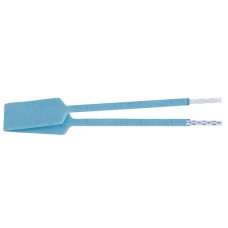
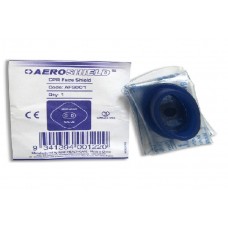
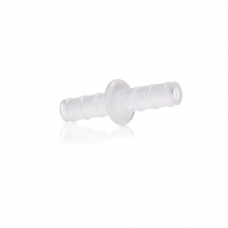
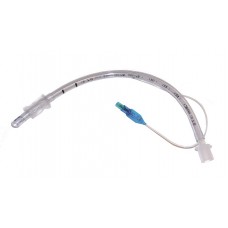
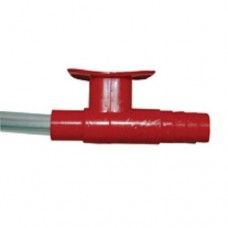
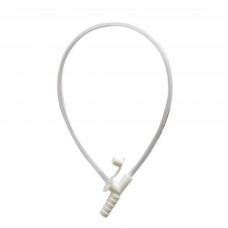
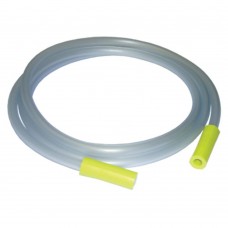
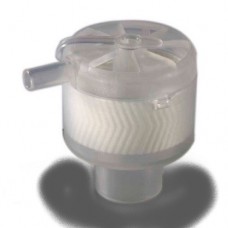
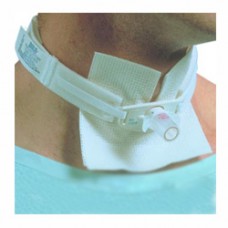

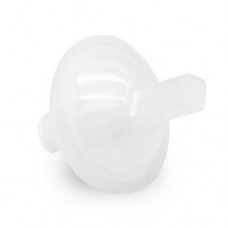
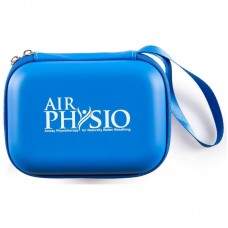

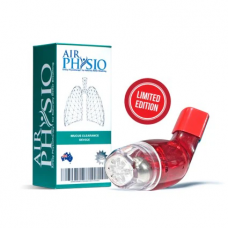
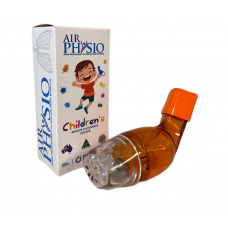
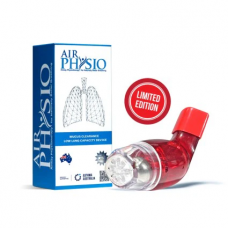
-228x228.jpg)

